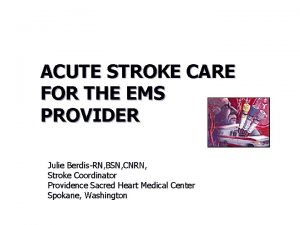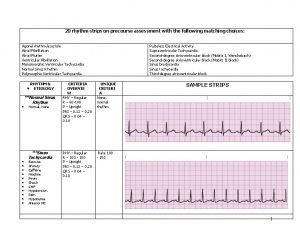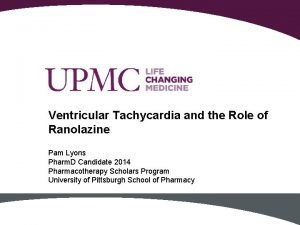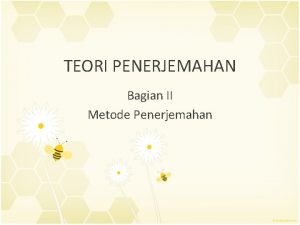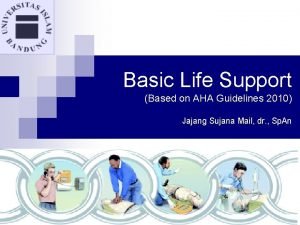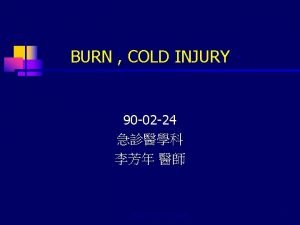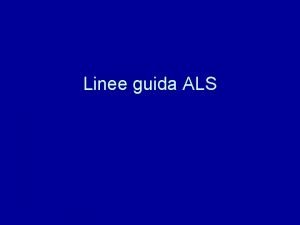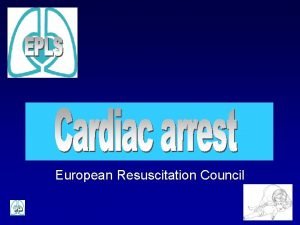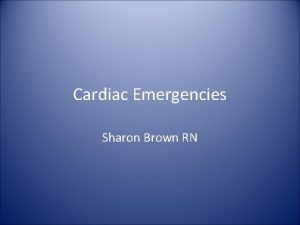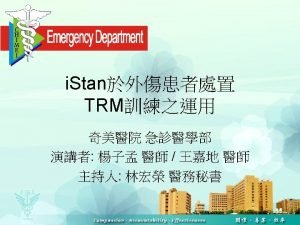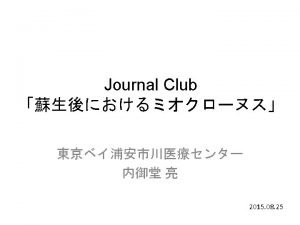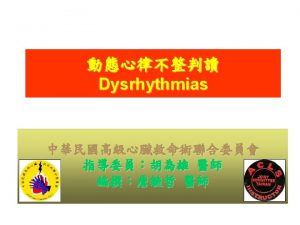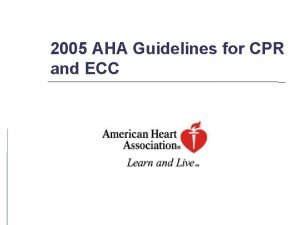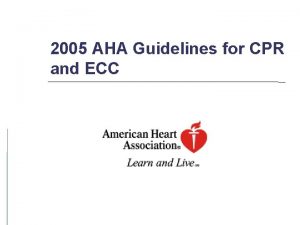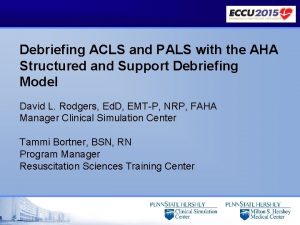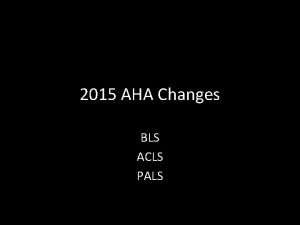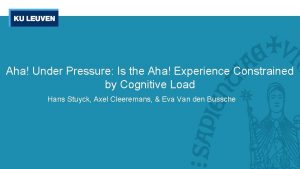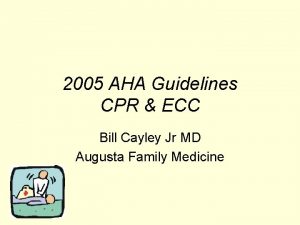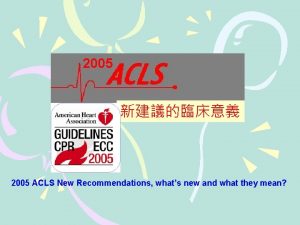AHA 2005 ACLS Guidelines Increased Emphasis On n















- Slides: 15

AHA 2005 ACLS Guidelines

Increased Emphasis On: n Effective CPR – “Push hard and push fast” – Chest compressions

Airway- New n 5 cycles of CPR/ 2 min prior to phoning 911 for infants/children n No jaw thrust (lay people) n Health care providers may use headchin tilt in injured patients if jaw thrust fails

Airway- Old n 1 min of CPR prior to phoning 911 for infants/children n Jaw thrust only for injured patients (both health care providers and lay people)

Breathing n n n ALL rescue breaths over 1 s, with adequate volume to produce visible chest rise Lay people: check for normal breathing in adults Normal (not deep) breath prior to AR Continuous cycles when intubated only 8 -10 resps per min when intubated (q 6 -8 s) No rescue breathing without compressions for lay people

Breathing- Old n Rescue breaths over 1 -2 s n Varying tidal volumes suggested n 10 -12 resps/min once intubated

Circulation- New n Single compression to ventilation ratio for ALL single rescuers for ALL victims (excluding newborns) – 30: 2 (100/min) – 5 cycles (2 min) CPR in between rhythm checks – Health care providers (2 rescuer): • Adults 30: 2 • Infants/children 15: 2

Circulation- New n Limit interruptions in compressions n Rescuers may use one or two hands for child CPR n Unwitnessed arrests: may consider 5 cycles of CPR prior to defibrillation (or response time > 4 min)

Circulation- Old n Minimizations in interruptions not emphasized n Adult: 15: 2 n Infant and child: 5: 1 n Rhythm and pulse checks after defibrillation

Defibrillation- New n Single shocks followed by immediate CPR for VF/ pulseless VT – 360 J for monophasic defibrillators – Biphasic defibrillators: device dependent (120200 J) No rhythm/pulse check prior to initial 5 cycles, then pulse check only if organized rhythm present n Rhythm checks every 5 cycles (2 min) n

Defibrillation- Old n 3 stacked shocks for initial defibrillation – 200 J, 360 J n Single shock for subsequent defibrillations – 360 J

Adjuncts n AED’s – Use of AED’s in children 1 -8 years old (use pediatric system if available) – New AED’s will prompt rescuers for reassessment – Single shocks without rhythm check following – Use as soon as available except out of-hospital HC provider with child (not sudden arrest) or adult (unwitnessed arrest) • 5 cycles CPR prior

Adjuncts n Airway: – LMA/Combitubes n Pacing: – No longer used in asystolic arrest

Algorithms n Polymorphic VT – Unsynchronized (defibrillation) shocks n Bradycardia – Atropine dose 0. 5 mg n Arrest – Drugs timed to be delivered with CPR ASAP after rhythm check n VF/ pulseless VT – Antiarrhythmics: Amiodarone preferred, then lidocaine

Algorithms n Tachycardia – Simplified to one algorithm – Wide vs narrow complex; irreg vs reg – Simplified suggested drugs
